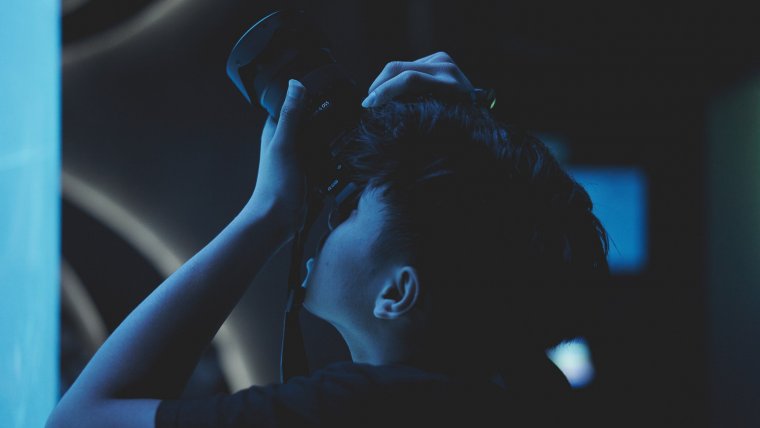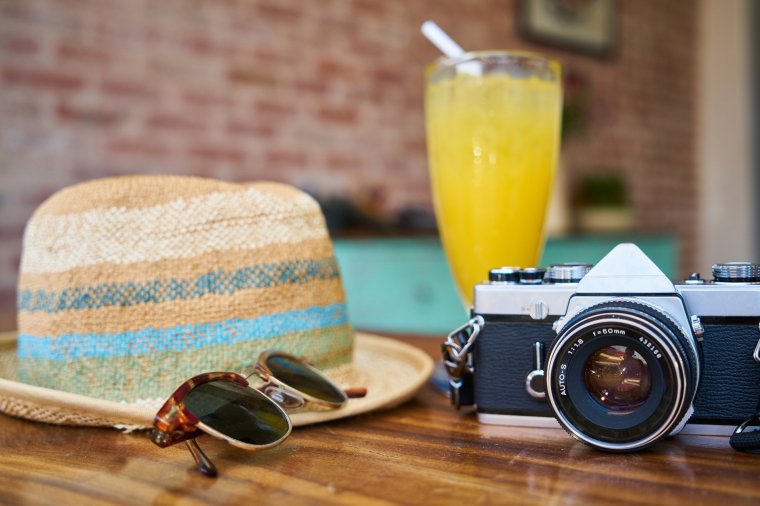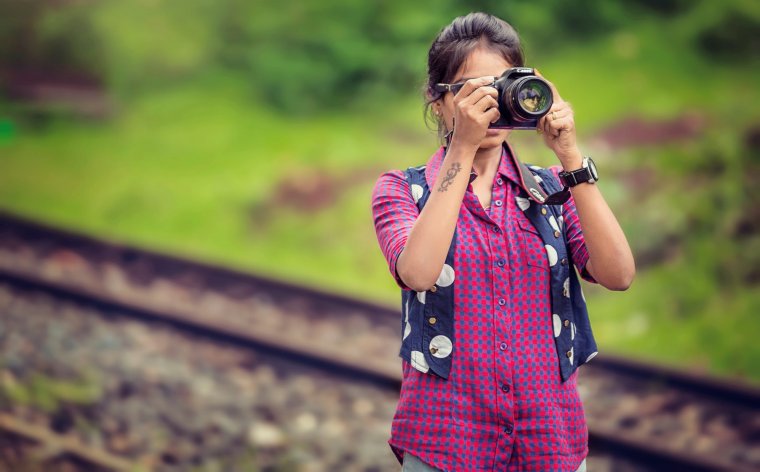
In the wake of Canon and Nikon’s new release of their mirrorless DSLR camera, I only saw it fit to address the elephant in the room. For a few years, we’ve observed as Sony became giants not only in the photography industry, but creating some top-shelf equipment that has been excelling in videography as well. Gone are the days when music videos were being shot with a camera so big, it would probably take a whole front seat in a car. Cameras are now more compact while still producing amazing results. These mirrorless cameras are now able to fit easily in the palm of your hand and take little to no effort to carry around. Does this mean the days of hauling around a DSLR is coming to an end? In this article, I aim to discuss and share some of the advantages and disadvantages a mirrorless camera vs DSLR.
Table of Contents
A mirrorless camera is pretty much a self-explanatory name, as it does not have or require a reflex mirror. A reflex mirror is one of the key components that can be found in a regular DSLR camera which Canon and Nikon have produced a lot of over the years. The mirror mechanism can easily be found in DSLR camera, and it essentially reflects light up into the optical viewfinder, which then shows us exactly what we are capturing. The process is completely different in a mirrorless system, and as a result, the image sensor is completely exposed to light at all times. This produces the digital preview you see on your little LCD screen, as well as through the digital viewfinder. This basically inspired the nickname “mirrorless cameras.”
Now that we’ve discussed the differences, let’s talk about the pros and cons of mirrorless technology compared to a traditional DLSR so you can find the best camera for your needs.

As I mentioned earlier, we cannot argue how compact and travel-friendly mirrorless cameras are. As opposed to a bulky DSLR camera body, it’s a lot easier to stuff a mirrorless body into your backpack with an interchangeable lens or two and then get on the move. A DSLR is a bit more complex than that, as it requires a whole camera bag at most times, if not all the time. In addition to its compact camera body size, it’s very lightweight as well. A mirrorless camera has a lot less moving parts than a DSLR, and this works to its advantage, as it can be operated very quietly.
The digital viewfinder, or as it’s more popularly known as the EVF (electronic viewfinder), enables users to see a live view of the image taken with exposure settings and corrections applied during real time. This makes it a lot easier for the user to compose their shots in low light situations.
The Autofocus or AF systems found in mirrorless cameras are almost unparalleled. I have personally given one of these mirrorless cameras a try and I was immediately blown away as to the capabilities of the AF system found in this compact machine. This system, combined with the decisive on-sensor phase detection, as well as a precision of contrast detection, makes it pretty hard for DSLRs to compete.
Last, but not least, these mirrorless cameras do enable of layers of the viewfinder information. What this means is, while you’re shooting, the digital camera is relaying all the information you need through things such as shutter speed settings , levels, and even histograms. It can also provide you with a magnified view of the area you’re focusing on and give you playbacks of the images or videos you’ve taken, seamlessly.
You know with all those good things, comes some drawbacks. One of these drawbacks is found in your battery life. With all that information and digital work being done by your mirrorless camera, it has to come from somewhere. When it comes to getting the full time needed from your battery, I have yet to find a mirrorless model that compares to a DSLR. You will often find photographers or videographers who use a mirrorless camera hauling around a charger and extra batteries as well. Most, if not all, mirrorless cameras are capable of shooting in 4K as well and this consumes a lot of battery life. So, if you plan on purchasing a mirrorless camera, be prepared to buy extra batteries and chargers as well.
Most mirrorless camera, namely Sony, tend to have a startup lag, which can be detrimental, depending on the type of photography you’re doing. For example, if you’re a professional photographer shooting a wedding, you may find that you mirrorless camera falls asleep, it will take a solid two to three seconds before it’s back up and ready to go. This can, of course, be annoying and have you missing a bunch of key shots.

A DSLR camera is obviously bigger in size and carries a more healthy weight. However, this size enables the manufacturers to dedicate more buttons to specific control for fast and easy usage in the field. When shooting with a specific DSLR camera for a year or for a majority of your photography career, navigating these buttons on your camera becomes a part of you. Eventually, you will find yourself not having to look at your camera to change a setting at all. Having these buttons dedicated to specific functions eliminates the task of having to browse through too many menus or settings to change one thing. I have a couple friends with mirrorless cameras, and I have seen them go through this struggle while shooting.
Speaking personally, I have large hands, and I know photographers with hands similar to mine will agree with this point: DSLR cameras feel more robust and like an actual camera is in your hands as opposed to a mirrorless that feels like a point and shoot. I generally like to feel the weight and feel of having a DSLR camera in your hand is a lot better than a mirrorless. The compact nature of a mirrorless system is great, but it’s just something about a DSLR.
Last but not least, the durability of DSLRs throughout the years have proven to be unmatched. When it comes to reliability and performance, DSLRs are consistent. Most DSLRs are equipped with some weatherproofing to protect the hardware inside in the event of light rains or even some snow. This comes in handy when mother nature decides to hand you a little surprise while shooting. This durability and reliability have been really helpful throughout the years as a photographer.
One of the first cons of a DSLR is pretty obvious in its weight and size. When shooting for an extended period of time, this weight can be stressful on your shoulder or neck—especially if you have to hike to your destination, like with landscape photography. Most DSLRs are two to three times the weight of mirrorless system and this can sometimes be a hassle.
Lugging around a big digital camera can also take some dedication. Coming from someone who owns and shoots with a full-frame DSLR camera, you have to devote or designate a bag for your camera body and various DSLR lens. This can serve as an issue if you’re just trying to get up and go as opposed to packing a whole bag to haul around just to keep your camera and equipment safe. It might sound lazy but it can often be a task.
I truly hope this article has severed to be an eye opener when discussing the advantages and disadvantages of each type of camera. Thank you for stopping by and I look forward to seeing you again.
Comments (1)
This was super helpful in buying my latest camera. We went for the Canon 77D specifically because of the large hands comment haha. Great read and informative.
Thank you 🙂
Ciaran – maptrekking.com